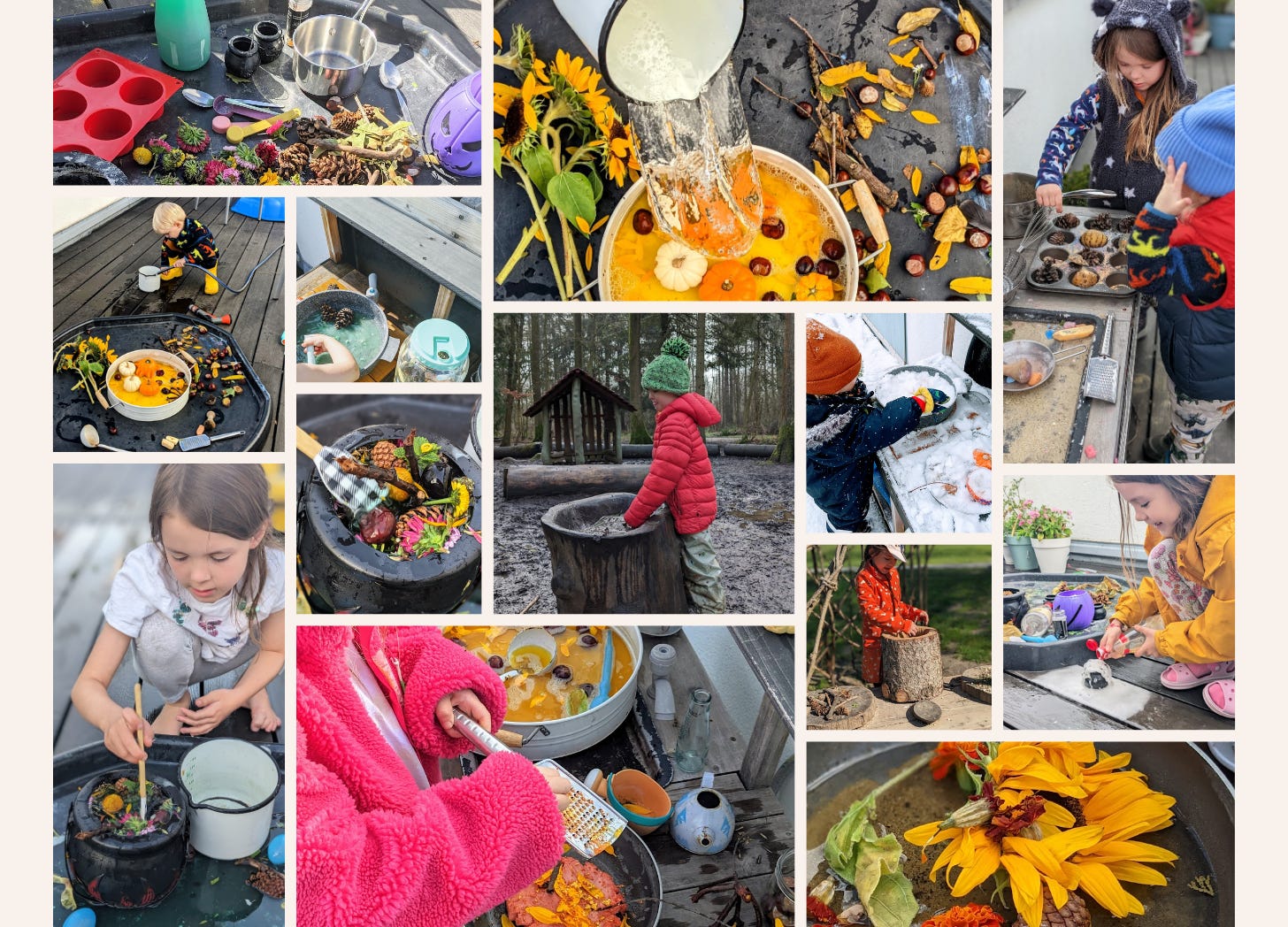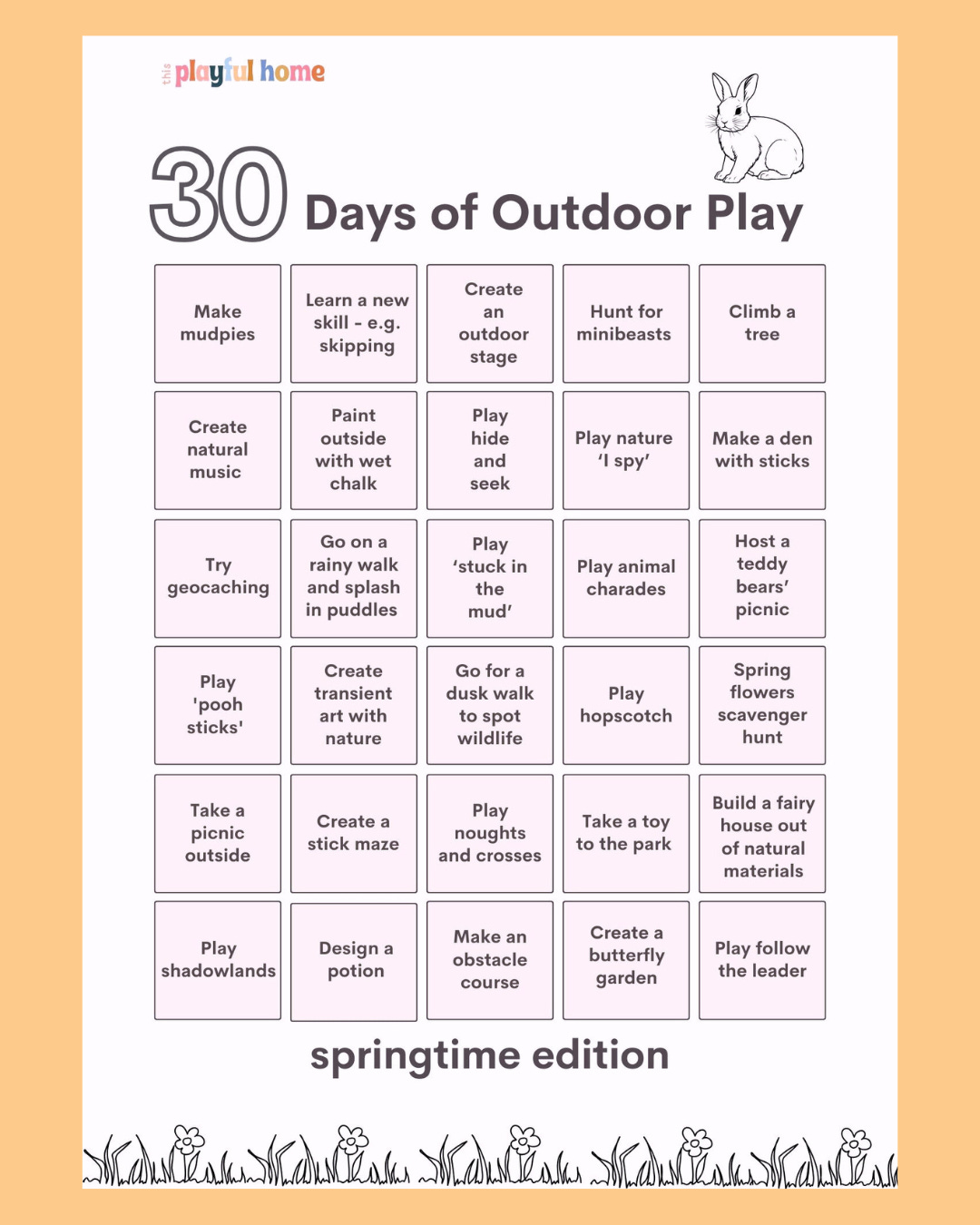One of my all-time favourite ways to encourage authentic, independent play is to get outside. Why? Because I can almost guarantee that my children will gravitate towards the 'mud kitchen' for a daily dose of imaginative play. Whether they are making a potion or 'food' there's always some way to get creative with play whilst outdoors.
For some perspective, my children are no longer toddlers. At the ages of 7 and 9, they still love nothing more than making up potions and recipes by picking a load of herbs and flowers from the garden, then mixing them with water, food dye and whatever else there is to hand.
Today marks the start of 30 Days of Outdoor Play and since mud pies and potion making are activities included in the challenge, I thought it was time to revisit our favourite mud kitchen resources.
But first, if you haven’t had the opportunity to check out our free challenge yet, you can do so here:
So what's the deal with a mud kitchen, is it expensive?
Short answer, yes it can be if you decide to order something bespoke, but it needn't be. If you're handy with tools, or know someone who is, then you can always DIY one. There are plenty of instructions to follow over on Pinterest.
I ordered our original mud kitchen via Amazon because of the nature of our own family life and the fact we tend to move countries every couple of years. Whilst it was reasonably priced, it also didn’t weather too well and we ended up sending it to the tip when it was time to leave Vienna.
Nowadays, we use our tuff spot tray and play tray to indulge in mud kitchen play. Although, I’ve almost persuaded my very handy teenage son to have a go at making one from old pallets - I will keep you informed on my progress with that one!
But bottom line, think about the cost per use. I’m sure a bespoke mud kitchen would be worth the cost if you intend to use it frequently.
How to get started?
To be honest, all you really need to get started with a mud kitchen is an old wooden table or bench (you could use outdoor varnish to preserve it) and a collection of old kitchen equipment. If your children love it and you feel like splurging on a bespoke mud kitchen later on down the line, then go for it!
When we replaced our ancient pots and pans with some shiny new ones, the older stuff made it's way into the mud kitchen instead of getting thrown away . The children love using the real deal and it helps add some authenticity to their play. It's also a good way to save money too.
Why is a mud kitchen beneficial?
The main benefit is that a mud kitchen will help to encourage authentic play. It's particularly great for when your children are entering the realm of make believe dramatic play.
Other benefits include:
Easy 'sensory play' option. Sensory play is important and there's no better way to embrace it than to be outside engaging with natural resources!
Language development - playing pretend, learning new vocabulary, playing with siblings /other children
Early mathematical skills - counting ingredients, capacity, volume, weight etc
Hand-eye coordination - pouring ingredients, adding water and so on
Fine motor skills - stirring potions, using tongs, grating chalks.
Learning about the world - children make sense of their everyday world by emulating what they see.
Simply being outside! Ideally, children need at least 2 hours outside each day. Playing in a mud kitchen is an easy way to pass that time.
You can learn more about the benefits of being outdoors here.
20 of Our Favourite Mud Kitchen Resources
Okay, so have I convinced you to create a mud kitchen? If I have, then it's time to get collecting resources. Some of these are seasonal and it might also depend on what part of the world you live in.
Old (rust free) pots, pans and baking trays
Water dispenser
Kitchen utensils - wooden spoon, whisk, spatula, tongs
Cheese grater
Juicer
Flowers and herbs- fresh or dried
Old weighing scales
Pinecones
Conkers (you can soak these in vinegar and bake them to preserve - we've had ours for years!)
Leaves
Sticks
Pumpkins
Food colouring
Small watering cans
Dirt / mud (check that soil is 'child-friendly' and free of pesticides)
Tea pot & cups
Colander
Rocks
Sand
chalks
Please always use your best judgement when using everyday and natural resources in play. Small items that might pose a choking hazard risk should not be used with under 3's. Throw away any items that have gone rusty.








